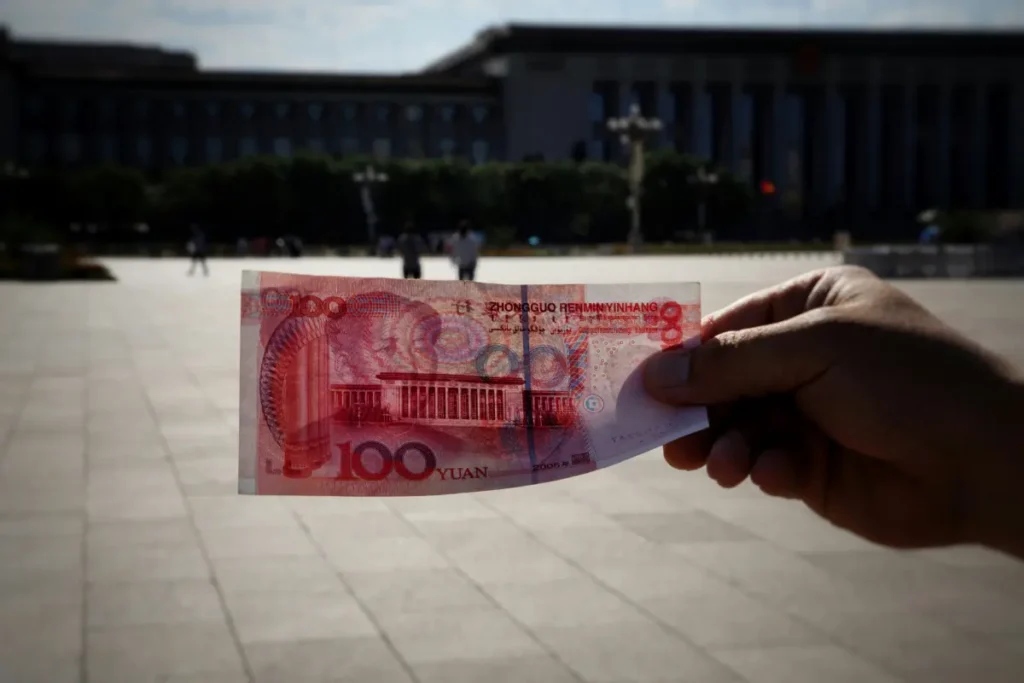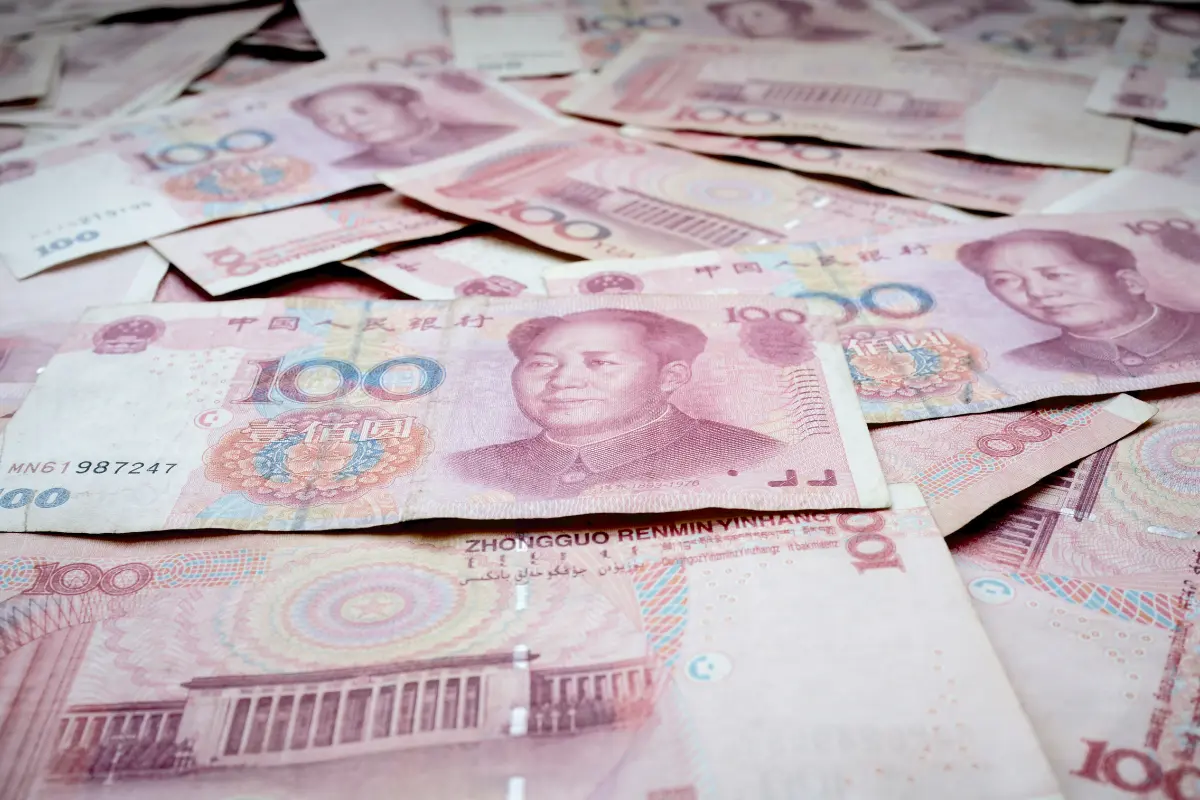A Close Look at China’s Move to Support Yuan During Volatility in the Stock Market
China’s main state-owned banks have actively sought to strengthen the yuan in an effort to stabilize its currency and counter the negative market mood brought on by a large decline in shares. The action was taken when the benchmark Shanghai Composite index fell 2.7%, marking the largest one-day fall since April 2022. This exclusive report clarifies the steps China has taken to keep the yuan from declining too quickly in the face of mounting worries about a slowdown in the second-largest economy in the world.
China’s Move To Support Yuan During Volatility: foreign funds Huge Sell Off
Since the start of the year, foreign funds have sold off about $1.6 billion worth of Chinese stocks due to the steep drop in the country’s A shares. Emerging indicators of an economic slowdown have damaged investor confidence. Chinese authorities have launched a two-pronged strategy to buck this trend: actively selling US dollars onshore and limiting liquidity in the offshore foreign currency market.
This action, according to Gary Ng, Senior Economist for Asia Pacific at Natixis, is a clear policy signal to China’s move to support Yuan during volatility and counter the current negative market mood. The goal is to stop the yuan from depreciating quickly, which might worsen worries about the state of the Chinese economy as a whole.
Offshore yuan tomorrow-next forwards jumped to a more than two-month high of 4.25 points late on Monday in reaction to the equity market decline. This rise is a sign that the offshore market’s liquidity circumstances are getting tighter. The market’s state-owned banks allegedly stopped lending to its competitors, making liquidity even more scarce and driving up the expense of shorting the yuan.

In the onshore spot foreign currency market, state banks have been actively selling dollars at the same time. Preventing sharp drops in the value of the yuan is the main goal. The selling has stepped up to protect the level of 7.2 per dollar, indicating the Chinese government’s resolve to keep the foreign exchange market stable.
It is important to remember that state banks frequently represent China’s central bank in the foreign exchange market, even though the sources who spoke on this topic asked to remain anonymous due to regulations prohibiting them from openly discussing market circumstances. Nevertheless, they can also carry out orders from clients or trade on their own behalf.
As of the time of reporting, the onshore yuan was valued at 7.1963 per dollar, which represents a decline of almost 1.4% from the start of the year. The offshore equivalent was trading at 7.2047. In the upcoming days, the dynamics of the yuan’s movement will definitely be closely observed as China tries to manage the difficulties presented by both internal economic conditions and external market factors.
Investors and market analysts are closely monitoring how well these steps are working to stabilize the yuan and allay worries about the state of China’s economy as a whole. The effect on sentiment among investors, both at home and abroad, will probably be a major factor in determining how China’s financial markets develop in the near future.
This prompt and well-coordinated action by state-owned banks highlights the government’s commitment to upholding stability in the face of economic challenges, particularly as the world closely monitors developments in the Chinese financial markets. In the months ahead, China’s economic story will surely continue to be shaped by the complex interplay of market forces, economic policy, and investor mood across the globe.
You may also Read our Finance, World News, Local News, Health, Food, and Education articles.
খাসটাইমস বাংলা সম্পর্কে আরও বিস্তারিত ও নতুন খবর জানতে ক্লিক করুন। সব ধরনের ব্রেকিং, আপডেট এবং বিশ্লেষণ সবার প্রথম বাংলায় পড়তে ক্লিক করুন।

